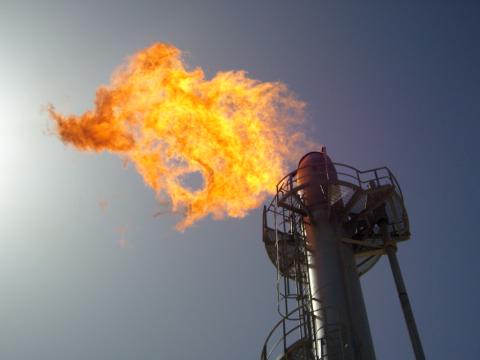
Last week we discussed the key charateristics of an analyzer for a flare stack application, now let's focus on the conditions of that environment. Debra Hall, our Director of Sales, points out that adapting to these trends is the key to successful monitoring:
It is becoming increasingly important to reduce emissions while saving energy when using a pollution control device such as a flare stack. In Refineries and Chemical Plants, proper flare stack design is essential to handle their multiple waste streams for maximum performance with minimum emissions. Since destruction efficiency and emissions (both visible and invisible) are some of the most important criteria to consider when designing a flare, when the design is done correctly, dramatic money savings will also be realized.
Waste streams are collected from the different processes around the refineries and chemical plants, and are sent to the flare stack for destruction. Continuous monitoring of the waste stream is necessary to identify the minimum heating value and ensure proper combustion efficiency. When there is a constant waste stream or consistent composition in the flare header, the flare design is fairly straight-forward.
What happens when the flare must handle different waste streams and combinations of each, all with unique gas compositions ranging from pure methane to streams with 60% steam or even 50% ammonia?
The answer to this dilemma is to monitor the Heating Value and flow rate of the waste gas on a continuous basis using the “Adaptive-assist” approach, and include a ratio control valve in the assist gas line to minimize the gas usage. By directly measuring the heating value of the waste stream, it can be determined whether the waste stream can be used as a stand-alone fuel source for the flare or whether it needs to be blended with an assist gas source, such as natural gas or propane.
In this case, the flare system design can be flexible and have real-time ability to adjust the amount of assist-gas injected into the waste stream to ensure destruction efficiencies of 98% and higher. Certain regulations around the world, such as 40 CFR 60.18 and the Royal Commission Guidelines, require monitoring the LHV or HHV (lower heating value or higher heating value) to adjust assist gas to achieve proper combustion efficiency. They are backed by law and often come with stiff penalties—a proper assist gas control system ensures compliance. An Adaptive Assist system is an innovative and proven method in providing these capabilities.
By using actual measurements, the process can be adjusted in real-time to work with actual conditions. In a plant where products and concentrations can change at any moment, it is essential to monitor the LHV/HHV in real-time to provide the needed readings for dynamic adjustments to ensure complete destruction efficiency in the flare, prevent over-steaming and minimize smoke. AND, let’s not forget – provide a substantial cost savings allowing the plants to use their own waste gas instead of fuel!
Knowing the heating value of these various scenarios, allows the Flare to operate economically and flexibly regardless of what chemical is burning. Additional benefits range from a reduction in fuel costs and increased burner efficiency to ensuring safe operations, making sure that combustibles and toxics are completely burned. Whether you have 70 cases or just a few, a simple fuel savings calculation can give an idea of the value and ROI of using an LHV/HHV monitoring system.

Add new comment